Top 10 Famous Buddha Statues In India
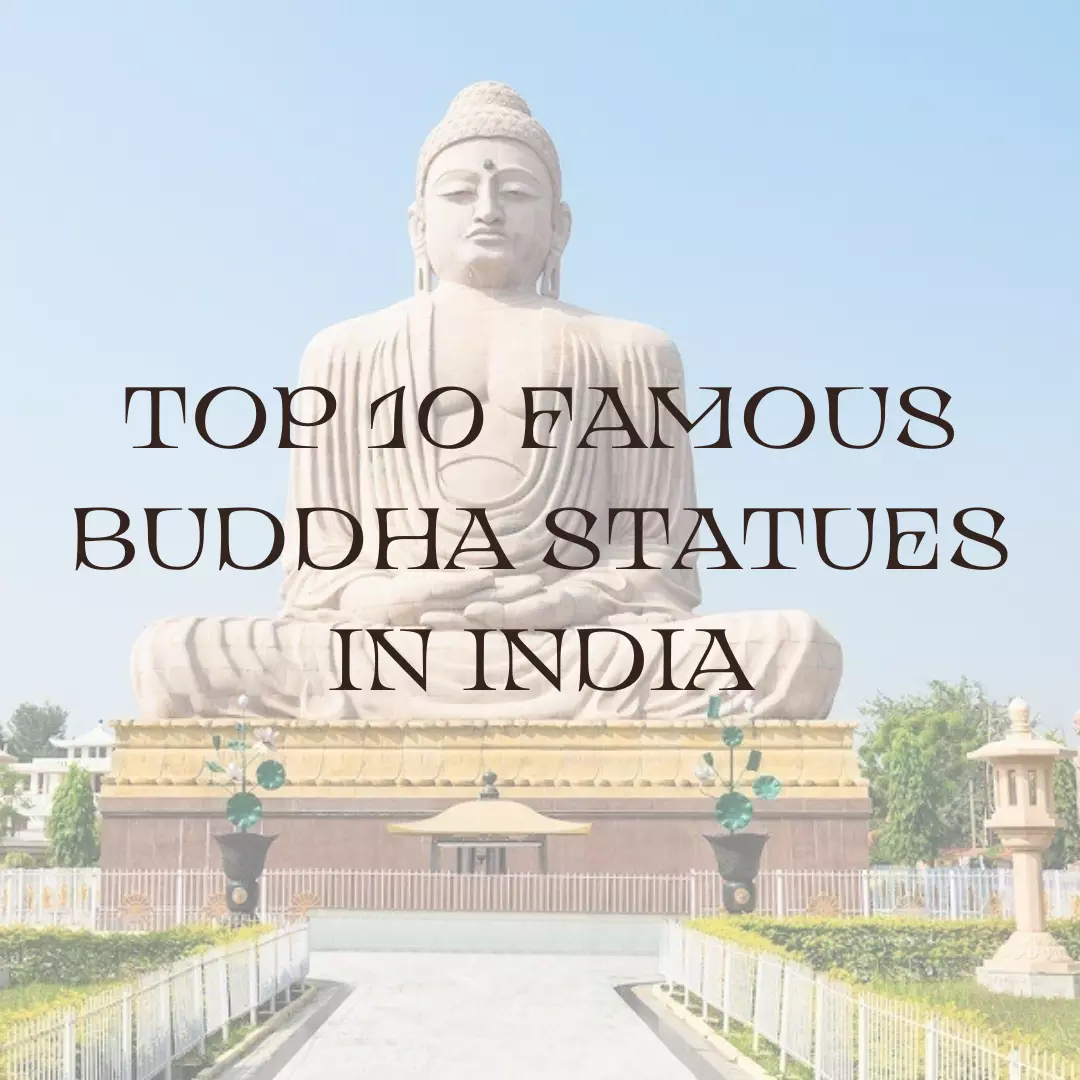
The inception of Buddhism happened in the eastern part of the Indian subcontinent with Siddhartha Gautama (later to be known as the Buddha) being the central figure of the faith. The faith later segregated into two sects namely, Hinayana Buddhism and Mahayana Buddhism. The followers of the Hinayana sects considered the Buddha as a human being and preached to heart the teaching of the Buddha as the goal to overcome the worldly suffering. Whereas, the believers of the Mahayana sects believed the Buddha to be a divine being who will ultimately guide his disciples to the path of ‘Nirvana’.
It is always a challenging task to handpick top 10 most significant and remarkable statues of the Buddha in India. Yet, we have shortlisted top 10 most famous Buddha statues based upon their historical, cultural and spiritual significance and the number of footfalls that they receive annually.
Some of them are venerated as the beacon of Buddhist philosophy, while others are breathtakingly sheer architectural marvels. We leave that classification for you to surmise and begin the list with the following gem of a landmark -
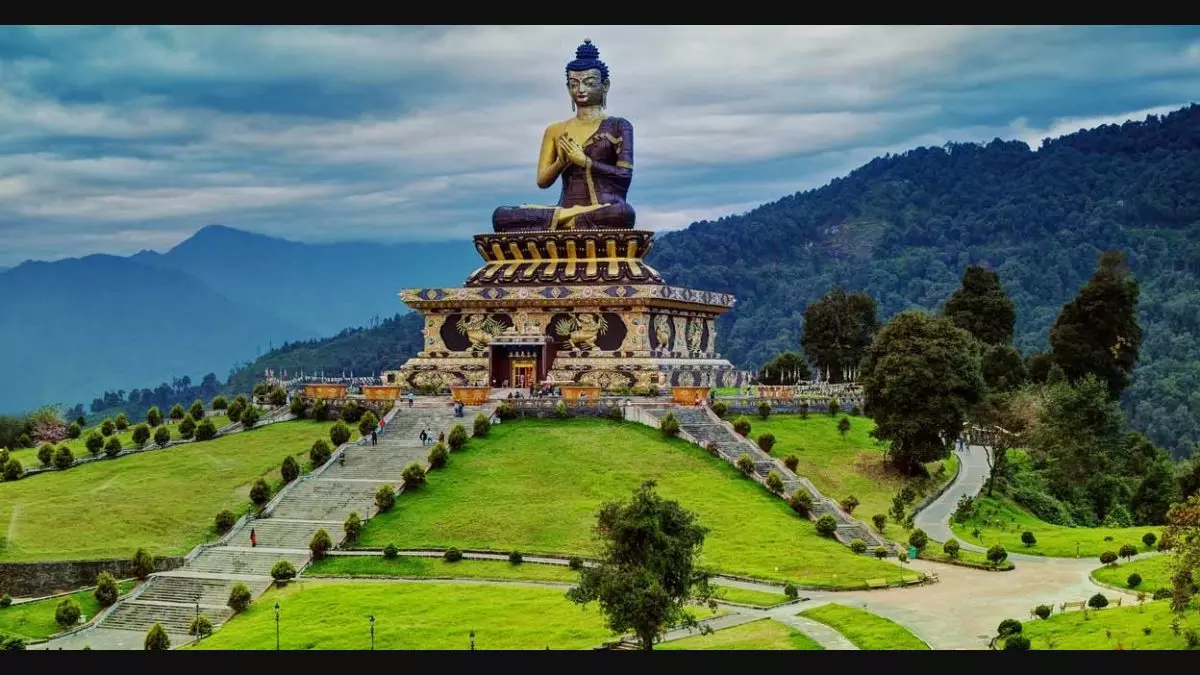
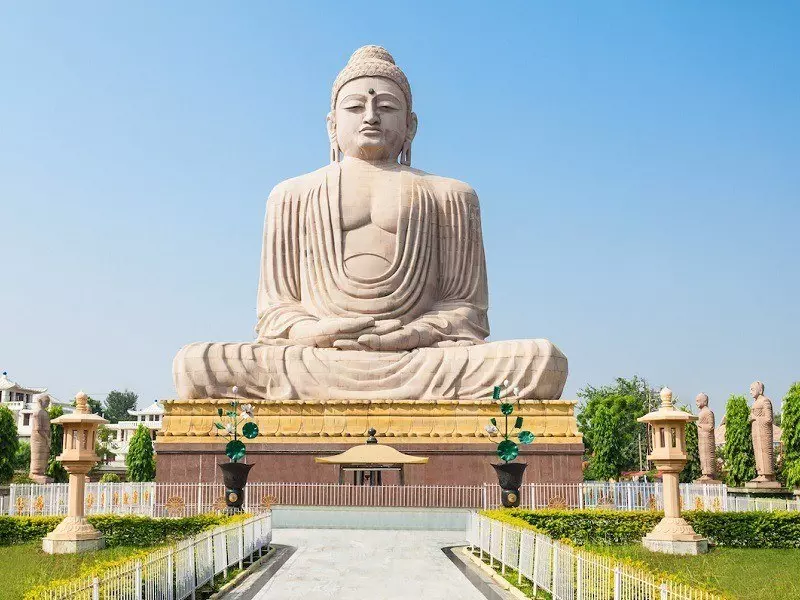
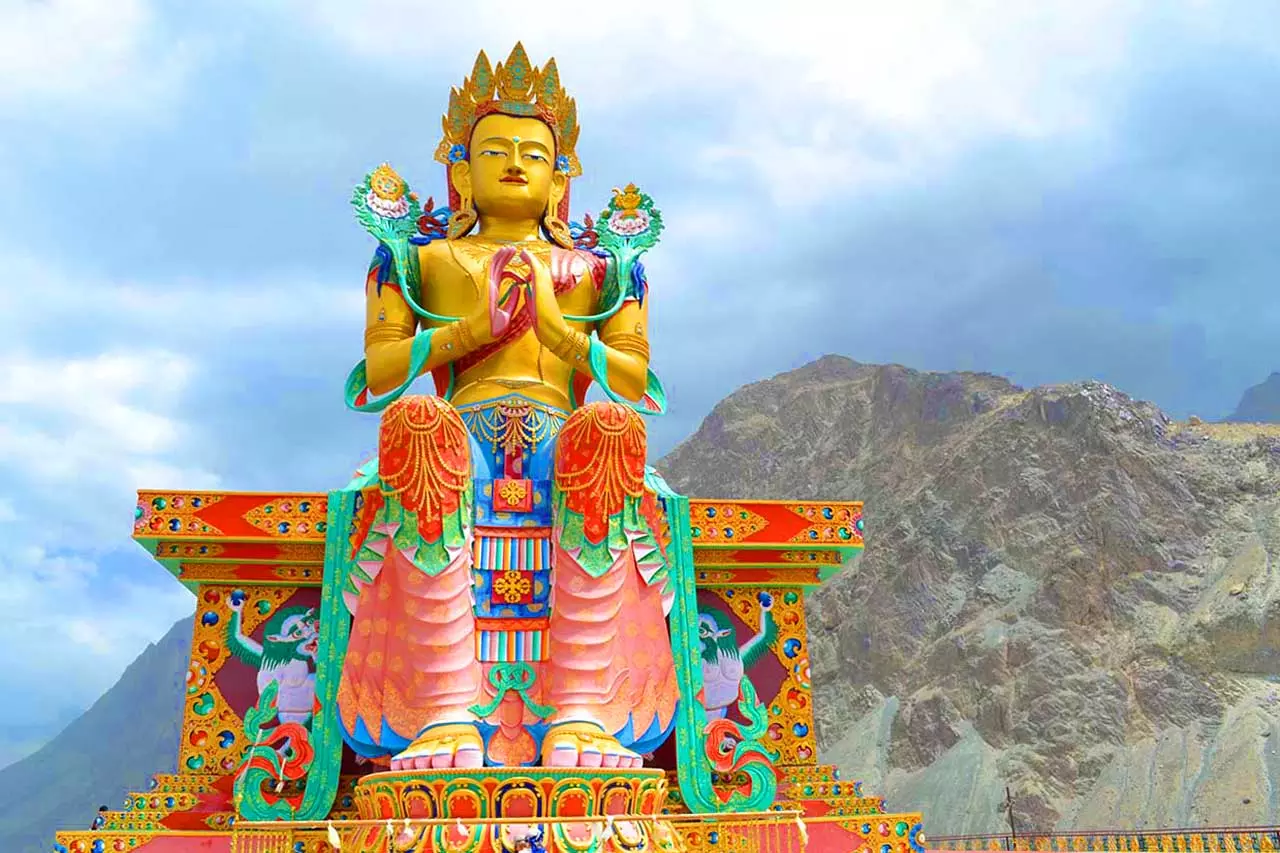
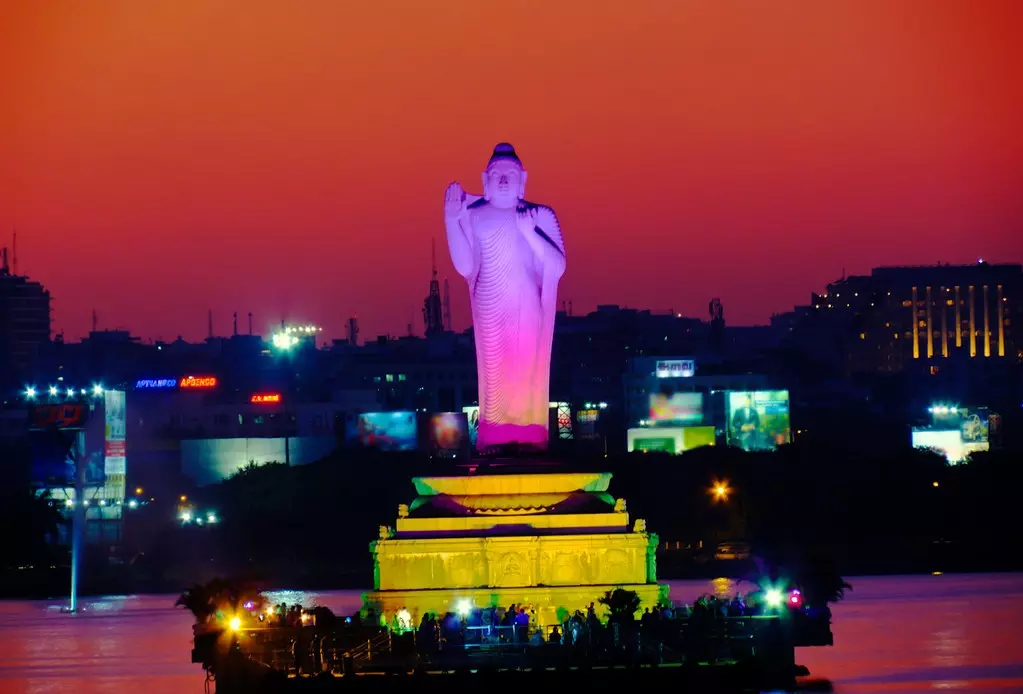
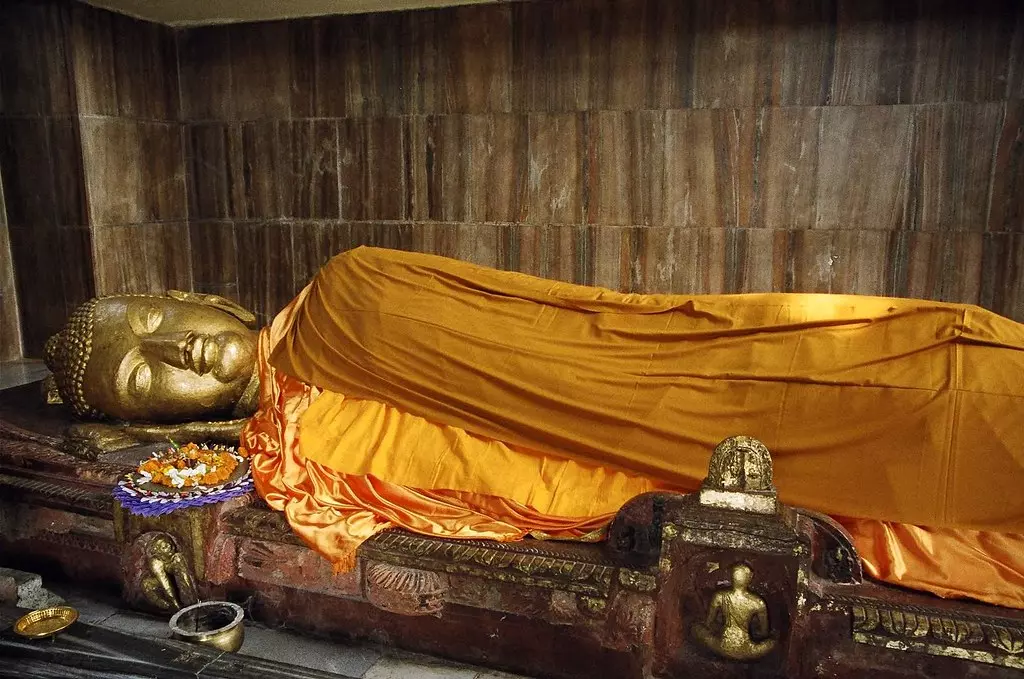
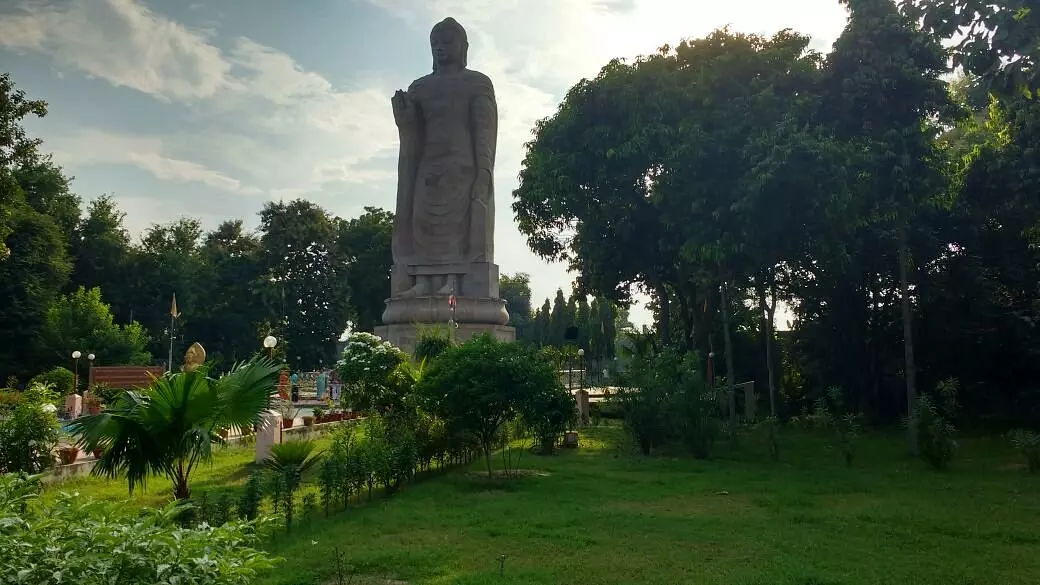
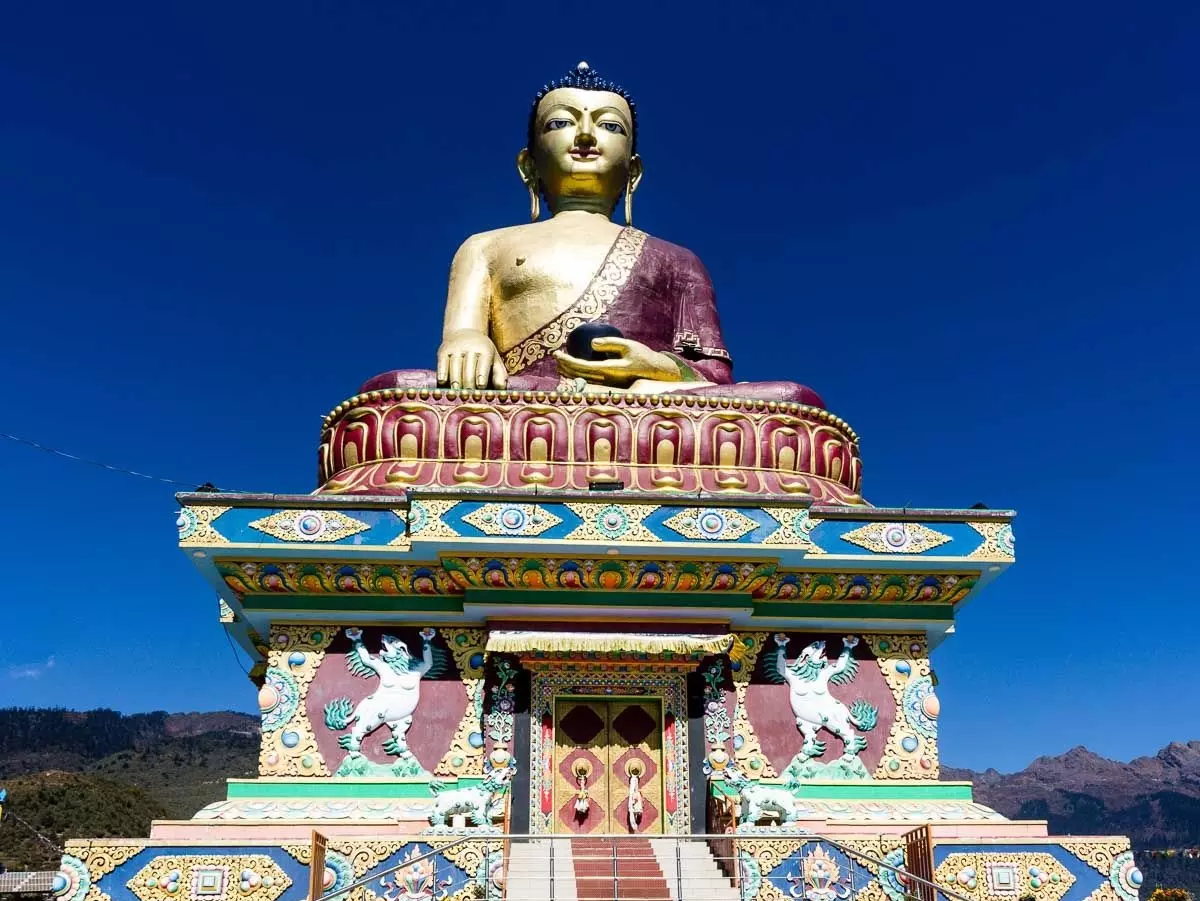
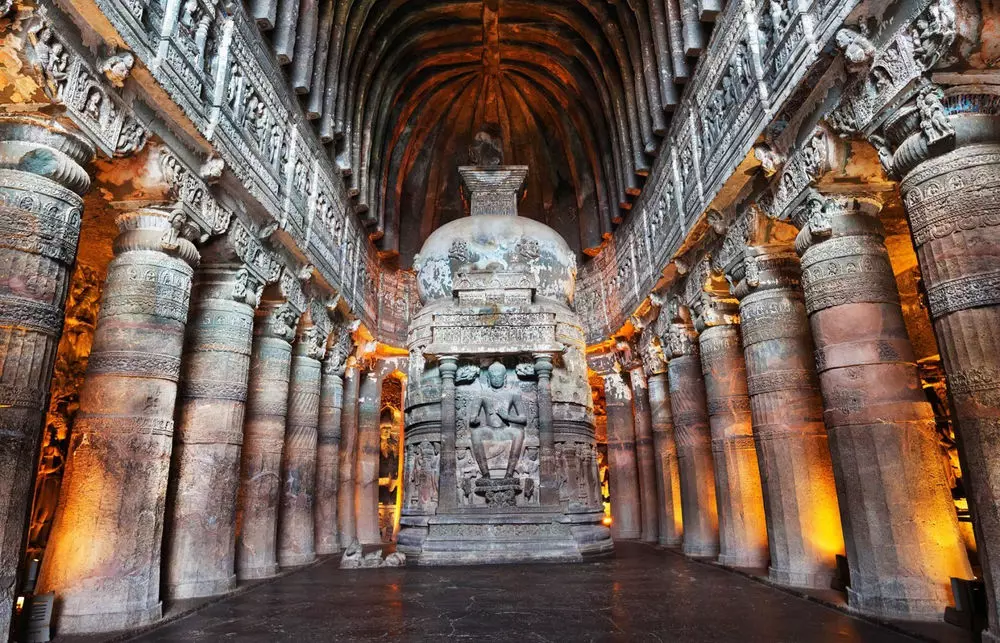
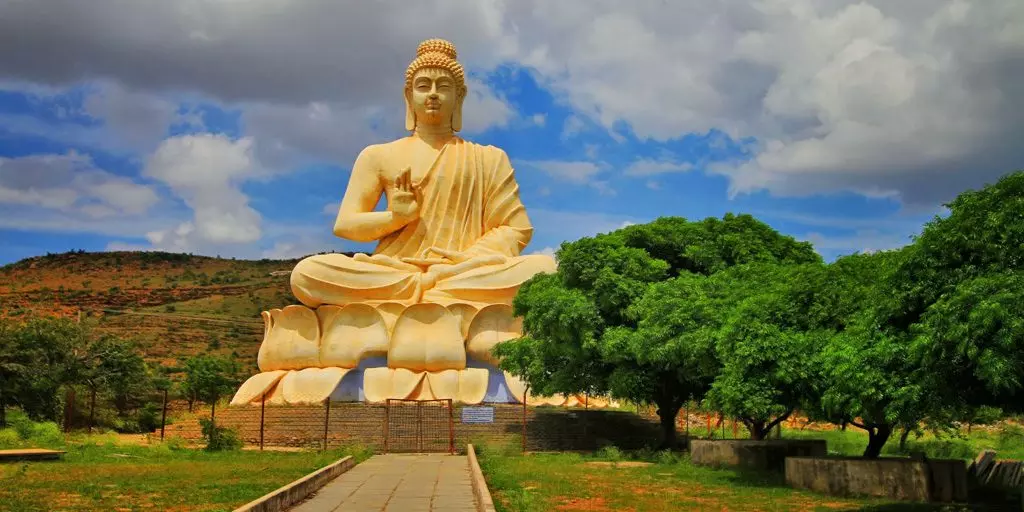
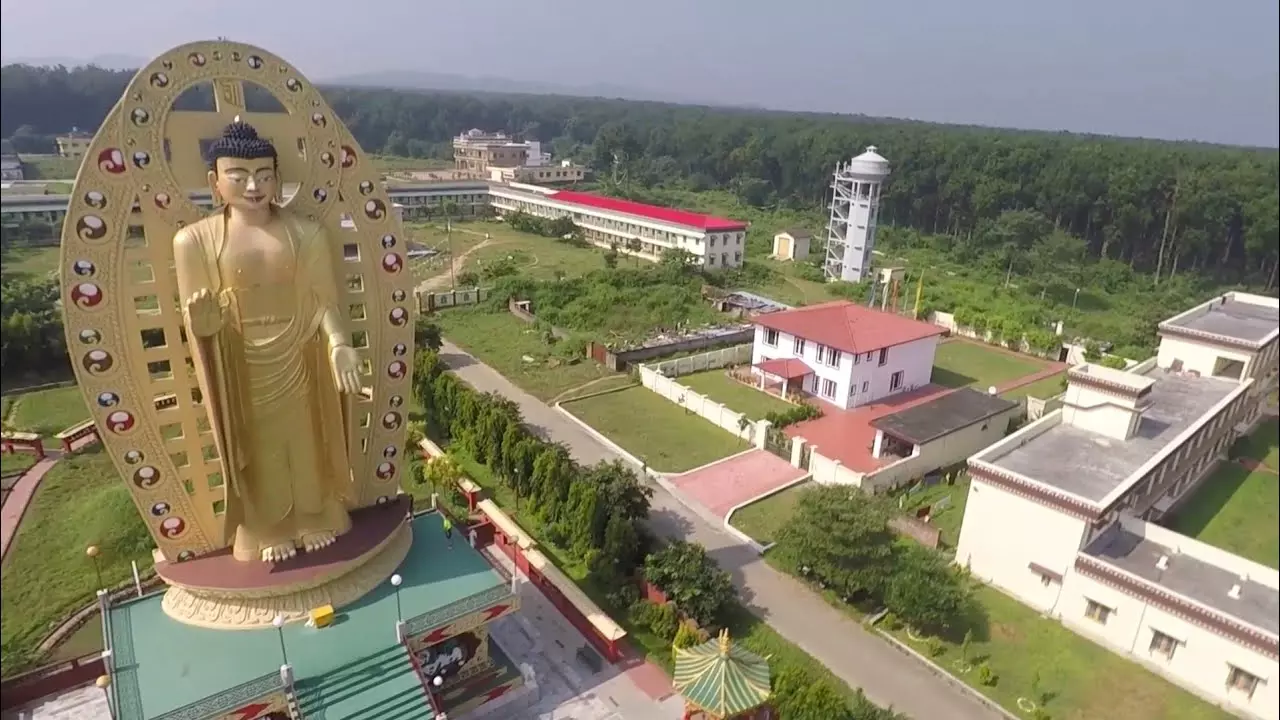
We fully hope that the above given list of the top 10 famous Buddha statues in India would help you prepare your next travel itinerary. Settle these places in your go-to list in a more prudent manner and enjoy your destinations to the fullest with the provided piece of information.
Happy Touring!! :)
It is always a challenging task to handpick top 10 most significant and remarkable statues of the Buddha in India. Yet, we have shortlisted top 10 most famous Buddha statues based upon their historical, cultural and spiritual significance and the number of footfalls that they receive annually.
Some of them are venerated as the beacon of Buddhist philosophy, while others are breathtakingly sheer architectural marvels. We leave that classification for you to surmise and begin the list with the following gem of a landmark -
1. Tathagata Tsal
The Buddha Park of Ravangla, locally known as Tathagata Tsal is a famous park located in the South Sikkim district to host one of the tallest statues of the Buddha in the Indian subcontinent.
Location:
This statue of the Buddha is situated near Rabong, in the South Sikkim district of the Indian state of Sikkim. The park is a part of the Himalayan Buddhist Circuit. It is the Mount Narsing that is present as the background of the statue.Construction:
The construction of the statue happened between 2006 to 2013 and was consecrated by the 14th Dalai Lama on 25 March 2013. This 40 meters tall statue of the Buddha marks the special occasion of his 2550th birth anniversary. The construction of the statue has been done with the help of 60 tonnes of copper and termed as one of the classic examples of repousse work.Specialty:
It is one of the major pilgrimage and tourist centers in the state of Sikkim and receives a very good amount of footfall due to the presence of Cho Djo lake within the complex premises. It is guarded by the forests from all sides. The area surrounding the Sakyamuni statue of the Buddha is alluring to the visitors due to an ample amount of strolling pathways and a phenomenal number of picturesque surroundings.Tip:
The perfect time to make a visit to this park is between the months of April to June in a year. It is also the time when colorful flowers dot the park. If you are fond of snow, then the time between September to November would be an ideal time for you to make a visit and witness a flabbergasting view of the snow-covered mountains of the Himalayas.2. Great Buddha, Bodhgaya
The land where Siddhartha Gautama sought and attained enlightenment to become the Buddha. The Great Buddha, also called Daibutsu is situated at Bodhgaya in his iconic meditative position with his eyes closed. It is one of the most popular and major pilgrimage and tourist destinations for Buddhists and non-Buddhists alike.
Location:
The statue is located right next to the Mahabodhi Temple, which is a UNESCO World Heritage Site in itself. One can easily reach the statue from outside through Gaya Airport which is located at a distance of around 15 kms from the Great Buddha Statue road.Construction:
The dhyani Buddha statue has been raised to an impressive height of 82 feet (25 meters) and has been made with a mix of red granite and sandstone blocks. The foundation of the statue was laid in the year 1982. The statue was unveiled and consecrated on November 18, 1989 in a ceremony and graced with the presence of His Holiness the 14th Dalai Lama.Specialty:
The statue is located in a beautified garden and surrounded by smaller statues of the 10 principal disciples of the Buddha. Five statues are located on each side of the statue.Tip:
While visiting the statue at Gaya, it is advisable to not miss the hollow spiral staircase located within the statue. It leads the visitors right from the ground up to the chest level of the statue. There are shelves located on the interior walls of the Buddha showcasing 16,300 small size bronze images of the Buddha.3. Maitreya Buddha, Ladakh
The golden statue of Maitreya Buddha glows in the middle of an enthralling Ladakhi landscape. Strikingly remarkable and beautiful, Likr Gompa is one of the most significant monasteries associated with Tibetan Buddhism.
Location:
This 32 meter statue is located near Diskit Monastery situated at Nubra Valley in the Indian union territory of Ladakh. Also termed as Deskit Gompa, it is one of the largest and oldest Buddhist monasteries of Ladakh.Construction:
As per the locals, it is the statue of Jampa Buddha and was set up in the region in the year 2006 with the goal of promoting peace and harmony in the region. However, the official inauguration was conducted by H H Dalai Lama in the year 2010. The statue is facing the Shyok river.Specialty:
The statue of Jampa Maitreya Buddha is covered with intricate carving, vivid colors and brilliant craftsmanship. There is a hall situated underneath the statue with a wide range of Buddhist literature and the collection of statues, including those of Guru Rimpoche and Shakyamuni Buddha. An interesting fact associated with this Buddha statue is that the natives of the valley played a pivotal role in its construction with the gold used in the statue being donated by the chiefs of the major monasteries around.Tip:
Personal tip is that it is best to visit the place between the months of June and September. The place can easily be reached from Leh by hitching a ride on a bus.4. Monolith Buddha Statue, Hyderabad
The monolith Buddha statue of Hyderabad is the tallest monolithic statue of Gautama Buddha in the world. It is measured 18 meters (58 feet) in height and features lord Buddha in his standing abhaya mudra.
Location:
The statue is located at an island in the middle of an artificial lake known as the Hussain Sagar. The rock on which the statue has been erected is known as the Rock of Gibraltor.Construction:
This monolithic work of art is the brainchild of the then chief minister of Andhra Pradesh, N T Rama Rao. During his visit to New York, USA, he was highly impressed by the Statue of Liberty and wished to construct something similar in Hyderabad. The statue was constructed out of a huge white granite rock excavated from a quarry near Raigiri, Bhongir (Nalgonda District). The construction work started in the year 1985 and took five years to get finished at a staggering cost of US$ 3 million.Specialty:
Beneath the padmasana base of the statue, there is a collage of sculptures depicting the important events from the life of the Buddha, dharmachakra and lions.Tip:
The statue is located near Lakdi-Ka-Pul, Khairatabad. You can easily reach Lumbini Park in the Hussain Sagar Island from Hyderabad metro station. It only takes a 15 minutes of boat ride from the mainland.5. Reclining Buddha, Kushinagar
Kushinagar is a very crucial pilgrimage site of Buddhism because it represents the site where the Buddha attained Parinirvana after his death. The site features a reclining Nirvana statue of the Buddha inside the Parinirvana Stupa constructed at the very site.

Location:
The reclining statue was first found and documented by Hwen Thsang during A.D. 637, and later excavated by British archaeologist Alexander Cunningham in March 1877. The present temple over the statue was constructed by the Government of India in 1956.Construction:
This reclining Buddha statue is 6.10 meters long and carved out of a monolith red sand stone. The statue of the reclining Buddha is lying on its right side with its head facing the north.Specialty:
The reclining statue is special in itself as it symbolizes the Buddha attaining parinirvana after emancipating himself from the cycle of life and death. Parinirvana is a stage that can only be attained by an individual who has attained nirvana in his life. The statue symbolizes the eternal fact that all beings have the potential to be awakened and liberate themselves from the cycle of life, death and rebirth.Tip:
Apart from reclining Buddha statue inside Parinirvana stupa, it is advisable to visit some of the nearest landmarks associated with the Buddhist culture, including Wat Thai Temple, Japanese temple, and the Buddhist museum.6. Standing Buddha, Sarnath
Sarnath is a historical place which witnessed one of the most crucial events of Buddhism. It was the deer park at Sarnath where the Buddha first taught the Dhamma after attaining enlightenment. The Buddhist Sangha came into existence from the events that happened at this place and lead to the enlightenment of Kondanna.
Location:
The standing Buddha is one of the prime attractions of Sarnath and it is located inside the premises of Thai Buddha Vihar. The place is readily accessible from the city of Varanasi.Construction:
The statue was built with natural sandstone over a period of 14 years as per the initiatives of Indo-Thai joint effort. It stands up to 24.3 meters (80 feet) in height.Specialty:
The standing Buddha is erected on a padmasana base over an elevated podium and depicting his iconic abhaya mudra. The statue is inspired by the Buddhas of Bamiyan.Tip:
If darshan at Kashi Vishwanath temple and Ganga Aarti are already in your itinerary, then you can easily add Sarnath Buddha statue to the travel plan. The distance between both the historical and religious sites is merely 8 to 10 kms.7. Lord Buddha Statue, Tawang
The Lord Buddha Statue of Tawang in Arunachal Pradesh is present at the place known as the Tawang Ganden Namgyal Lhatse. As per the legend, it is the celestial paradise of divine site. It was founded by Merag Lodroe Gyamtso in the year 680-81 to honor the wishes of fifth Dalai Lama.
Location:
The giant Buddha statue of Tawang is located in the upper region of the Tawang town at an elevation of 3,048 meters. It is situated inside main Tawang monastery, which is termed as the largest one in India and the second largest in the world.Construction:
The construction of this 26 feet high statue was consecrated by H.E Thegtse Rinpoche for the followers of the Buddha in the year 2015. Underneath the statue, there are two prayer halls built for the purpose of general prayers and meditation.Specialty:
The Buddha statue represents Sakyamuni Buddha in his bhumisparsha mudra through which he made Goddess Earth the witness of his enlightenment. It is located near Tawang circuit house.Tip:
When you visit the monastery, do not miss the great rotating prayer wheels, and flabbergasting thangkas. The sputtering butter lamps lit by the monks during the prayer is a sight to behold. You can also visit the residential library, the museum and the Buddhist school offering the basic education to children.8. Ajanta Caves Buddha, Sambhaji Nagar
Ajanta Caves are the world renowned 30 rock-cut Buddhist cave monuments featuring some of the masterpieces of Buddhist religious art. The historical site was bestowed with coveted UNESCO World Heritage Site tag in the year 1983.
Location:
There is a statue of reclining Buddha in the Cave no. 26 which had been carved out of the Basalt rock in a horse-shoe shaped gorge of the river Waghora.Construction:
The reclining Buddha of cave no. 26 is a 24 foot long and 9 foot tall sculpture, which believed to be carved from the rock in the 5th century AD. This masterwork of Buddhist art was achieved by the Buddhist monks under the patronage of the Vakataka kings. King Harishena being one of the most prominent ones.Specialty:
The reclining Buddha in Ajanta Caves is located inside a chaityagriha on the left aisle wall. The Buddha is eternally rested with a contented smile on the face and the head resting on an intricately carved stone pillow. Underneath the reclining Buddha there is a council of disciples being carved in the state of mourning.Tip:
Avoid visiting the caves during the months of summer as the basalt rock caves can get extremely hot and humid. The months of monsoon, i.e. July to September is the perfect time to visit the caves and even witness waterfalls in the region to get the trip forever etched to the memory.9. Belum Caves Buddha, Andhra Pradesh
There is a sizable size white Buddha statue sitting over a padmasana lotus base over what is known to be the second largest cave scattered across the Indian subcontinent. The insides of the Belum caves are naturally formed out of stalactite and stalagmite. It is the area that once were used by the Buddhist monks as meditation hall.
Location:
The white Buddha statue is situated on a hill rock near the caves. A beautiful pathway has been constructed adjacent to the caves to help the visitor effortlessly stroll to reach the statue.Construction:
The 60 feet statue of the Buddha sitting on a double layered lotus (padmasana) base was built by Andhra Pradesh Tourism Development Corporation (APTDC) and unveiled in the year 2005.Specialty:
The area surrounding the statue is an important region for Buddhism as some of the crucial relics of the Buddhist period were found here. One can go and witness those relics in a museum at Ananthapur.Tip:
While visiting the Buddha statue, take some time to take a stroll through 3,229 meter long Belum caves. The time spend there would be worth the visit!10. Clement Town Buddha Statue
Clement is a cantonment town located in the Dehradun district in the state of Uttarakhand. The area also features one of the largest Tibetan settlements in the region and the largest stupa in the world.
Location:
The statue is situated in the premise of the Mindroling Monastery at Mohabewala, which was then inaugurated on 28 October 2002 and is also surrounded by 8,100 m2 (2-acre) garden. It is located at a distance of 5 kms from ISBT Dehradun.Construction:
The Buddha statue is 31 meters (103 feet) high and is inspired by His Holiness the 14th Dalai Lama. The backdrop of the statue is adorned by a larger size prabhamandal (halo) reflecting the divinity of the enlightened Buddha.Specialty:
If you are an avid reader and keen to read Tibetan cultural books, then there are a number of bookstores to help you with what you need. There are some good cafes in the premises to enjoy delectable Tibetan cuisine. In case you are fond to shop for fancy clothing, then also there are certain stores to perfectly suit your requirements.Tip:
Please note that the interior of the temple over which the statue has been erected is only open for the visitors on Sundays. The garden and rest of the premises remain open to the visitors on all days. There is a Tibetan Children's Home nearby where underprivileged children are provided with food, shelter and education. If you are keen to give grants through some charity initiatives while your visit to Clement Town, then this is a good place to begin with.We fully hope that the above given list of the top 10 famous Buddha statues in India would help you prepare your next travel itinerary. Settle these places in your go-to list in a more prudent manner and enjoy your destinations to the fullest with the provided piece of information.
Happy Touring!! :)
